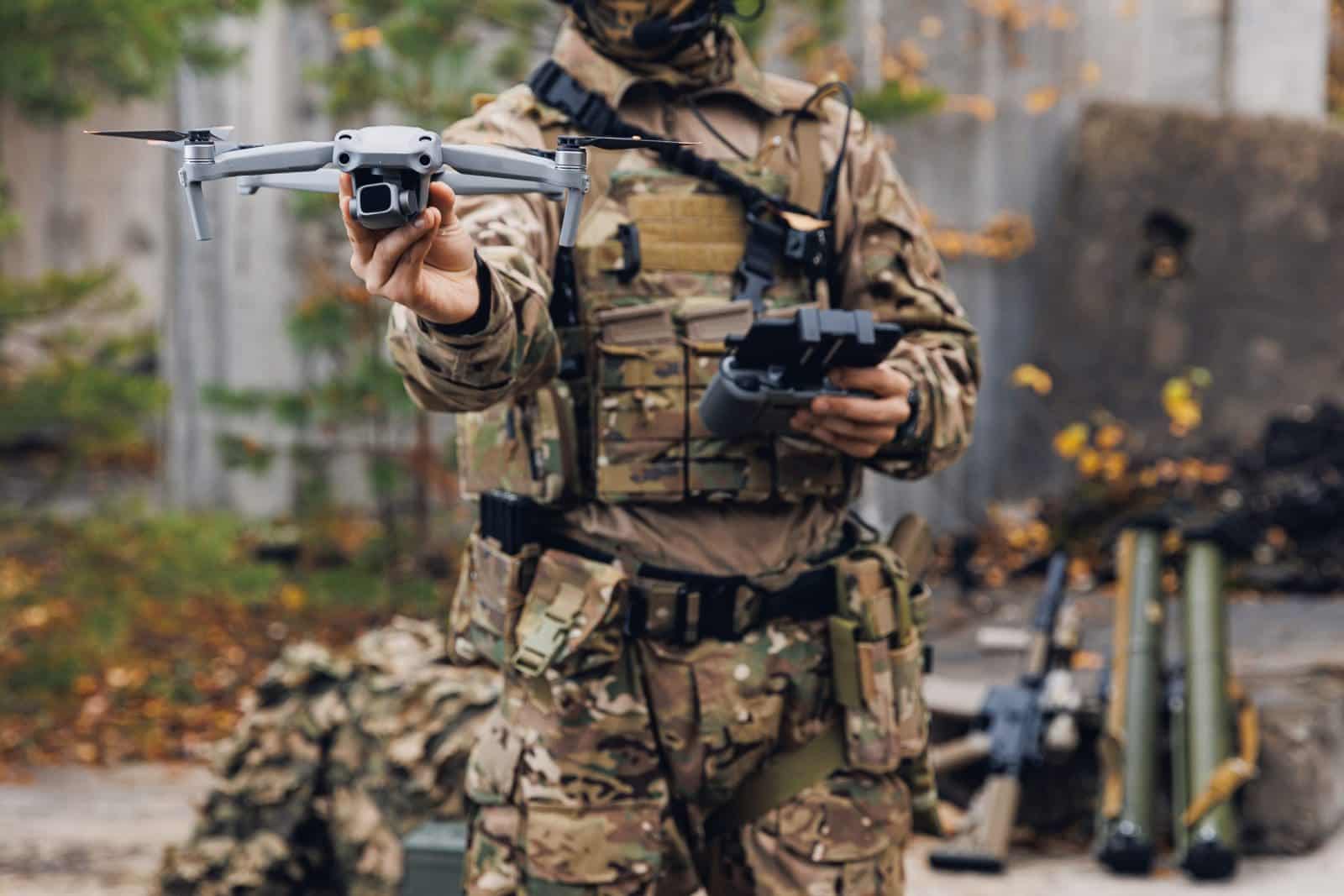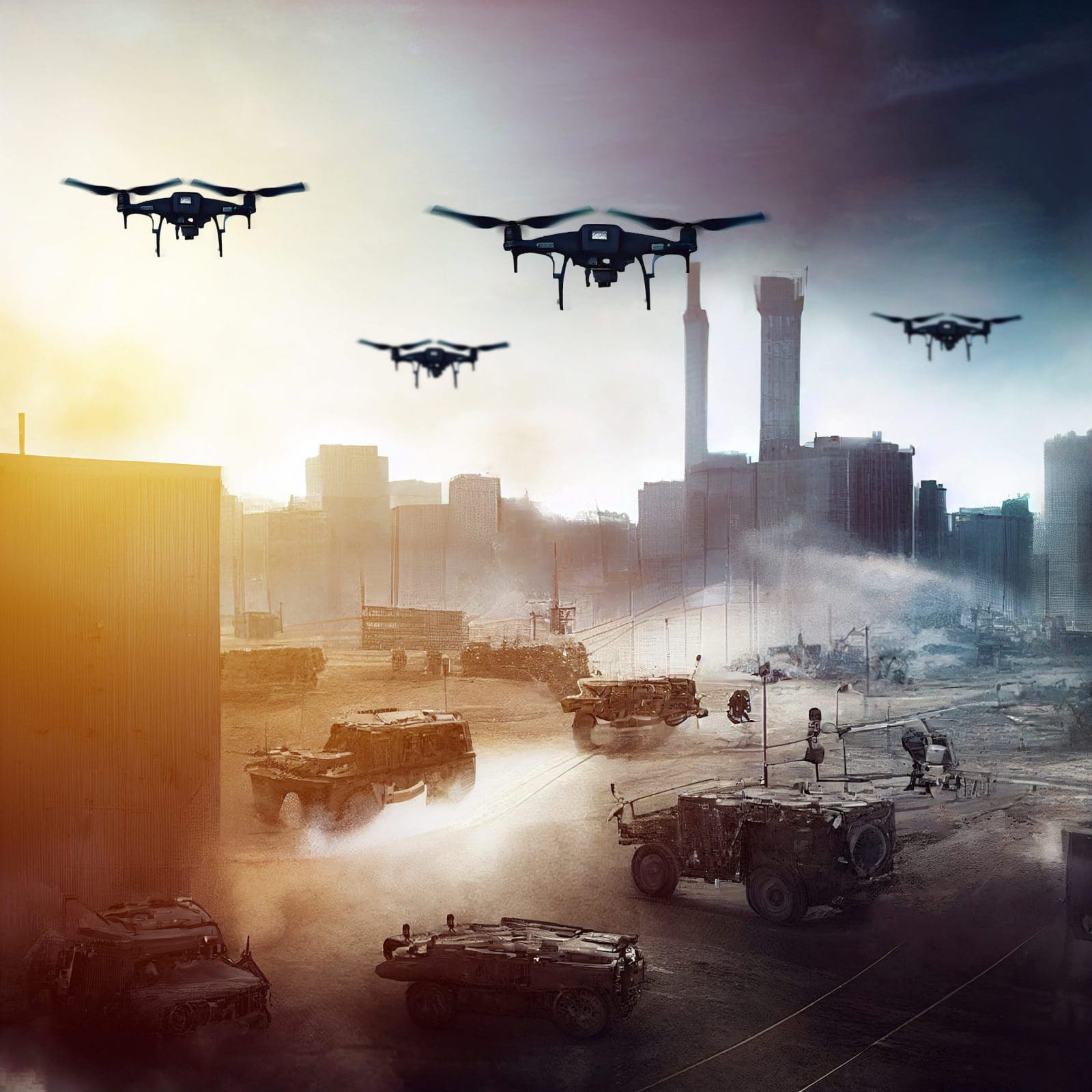Will AI Edge Computing Dominate the Future of Drone Warfare?
Summary: Drones have become standard in armed conflicts around the world. Their advantage is rooted more deeply in advanced AI technologies and visual data analytics than expected.
The Russian-Ukrainian conflict has finally eliminated any remaining doubt. Drone warfare is no longer a science fiction story or the realm of superpowers but a routine reality in aerial combat.
The drones’ success and popularity lie in their ability to see while remaining unseen. Drones are ideal for precision strikes with minimum collateral damage at low cost and no risk to the operator.
However, drone strikes can only be as accurate as the intelligence upon which they are based, raising questions relating to battlefield conduct[1]. Inaccurate data or data analysis leads to inaccurate execution. The results range from a failed mission to collateral damage and the loss of civilian life. Besides precision weaponry, effective drone use relies on accurate intelligence gathering and interpretation. High-quality visual data needs to be processed and analyzed in real-time to meet the required operational accuracy. This can be achieved through low-latency video streaming in combination with advanced AI edge computing. This allows for the autonomous initiation and execution of precise strikes by the weapons system at the right time.
AI Edge Computing Ensures Precision

Using smart video processing, drones identify and track fixed or moving potential targets. They carry out around-the-clock surveillance of designated areas to monitor activity and help determine the optimal strike time. Also called UAVs (Unmanned Aerial Vehicles), drones merge intelligence, surveillance, and reconnaissance (ISR) capabilities with actual combat mechanisms using edge AI computing to produce machine-readable knowledge and enable autonomous decision-making in real-time[2].
Time and accuracy are critical. Both attack- and defense technologies have evolved into high-performance equipment. Air-born attackers can find mobile and well-concealed enemy targets but also need to hide from the sensors of the defender on the ground (or air or sea) to escape their surface-to-air missile batteries.
”[…] the hider-finder competition can only be won by mastering a series of tactics, techniques, procedures, and technologies which minimize one’s own weaknesses while exploiting the enemy’s vulnerabilities[3],” writes Andrea Gili, Senior Researcher in Military Affairs at the NATO Defense College in Rome. Drones equipped with AI and visual analytics capabilities provide an advantage in this race.
The Rise of Drones in Aerial Warfare

As aerial attack systems advance, so do defense mechanisms. Modern air defense systems are designed to detect and destroy intruders autonomously, increasing the risk of them being shot down. No air force wants to put pilots’ lives in unreasonable danger. Losing even a small number of fighter planes severely affects the ability to carry out effective strikes. In addition, manned military aircraft are expensive from production (or purchase) to operation and maintenance.
UAVs provide a solution. No lives are put at risk, detection is difficult, and the cost of losing a drone is relatively insignificant. More than 100 countries and non-state groups currently own drones and many more have access to them.
Significance of Drones in Past and Ongoing Conflicts
- Drone use as weapons first became known in anti-terror and counter-insurgence initiatives. The US put them into action in Afghanistan, Pakistan, Somalia, Iraq, Yemen[4].
- Since 2011, drones have been extensively used by various actors in the Syrian conflict. Leveraging precise targeting capabilities for extrajudicial killings or assassinations has become commonplace. Meanwhile, non-state groups such as Hezbollah turn commercial drones into weaponised war machines[5].
- The 2019 Libyan civil war is widely considered the largest drone war so far. In the seven months between April and November 2019, the number of recorded drone strikes reached 1.040[6].
- The conflict in Ukraine has placed drone warfare in the spotlight of global attention. Molfar, an open-source organization tracking and investigating the Russian-Ukranian conflict, estimates that Russia fired over 600 Iranian-made drones between September 22 and January 23[7]. While these drones are reported to inflict damage on infrastructure and strategic buildings, they are also reported to be inaccurate and cause collateral damage. The Ukrainian defense forces are surprisingly successful in shooting them down, reporting a 70% success and increasing7.
These numbers show that the use of drones doesn’t inevitably put the user at an advantage. It further demonstrates that drone warfare is no guarantee for the moral conduct of war.
In an environment where drones are standard weapons and non-state actors have access to home-built combat drones, quality matters. The performance quality is determined by the technology that gathers intelligence and analyses data to achieve the intended precision. Real-time accurate image and video processing at low latency are critical to ensure a drone’s reliability and accuracy. And accuracy is critical in order to keep casualties in armed conflicts low.
AI-Driven Drone Swarms – The Future of Aerial Warfare?

Undoubtedly, technology will continue to advance and add capabilities to drones used in warfare. As Kai-Fu Lee[8] wrote: “The prowess of autonomous weapons largely comes from the speed and precision gained by not having a human in the loop[9].” The use of AI in edge computing is still in its beginning stages. We have yet to see where innovation will lead and what possibilities will open up.
One possible scenario is already emerging. Russia sends its drones in groups to compensate for their lack of efficiency. This could signal a shift in aerial combat tactics. In future armed conflicts, we might see swarms of drones using AI to communicate autonomously and coordinate moves while harnessing the intelligence they gather. Once again, we see that low-latency protocols are a major factor because they ensure successful coordination. Drones interacting based on visual signals are likely to be the future of airborne war.
[1] https://www.bbc.com/news/world-60047328
[2]https://journals.sagepub.com/doi/abs/10.1177/0967010615616011?journalCode=sdib
[3] https://www.ndc.nato.int/news/news.php?icode=1754
[4]https://www.thebureauinvestigates.com/stories/2017-01-17/obamas-covert-drone-war-in-numbers-ten-times-more-strikes-than-bush .
[5] https://paxforpeace.nl/publications/a-laboratory-of-drone-warfare/
[6] https://www.ndc.nato.int/news/news.php?icode=1754
[7] https://www.grid.news/story/global/2023/01/05/the-ukraine-war-in-data-winning-the-drone-war/
[8] Kai-Fu Lee, CEO of Sinovation Ventures and a co-author of the new AI 2041: Ten Visions For Our Future
[9] https://www.theatlantic.com/technology/archive/2021/09/i-weapons-are-third-revolution-warfare/620013/


